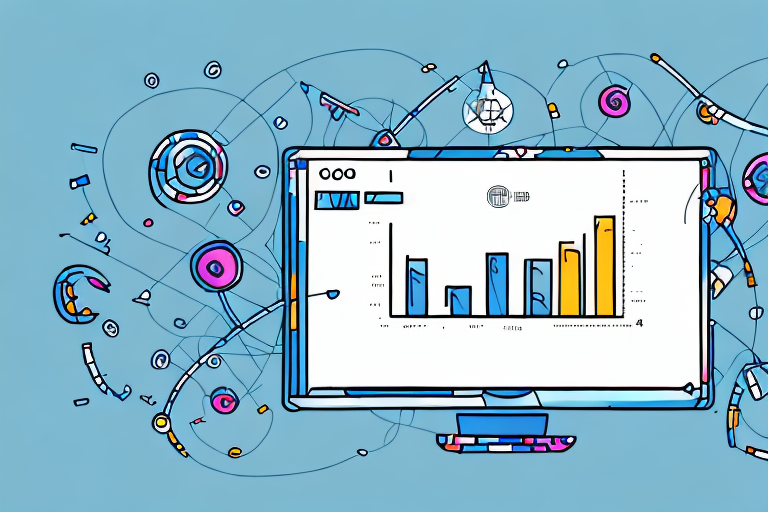How to Implement Retargeting and Remarketing Strategies for Maximum Results
Retargeting and remarketing are powerful digital marketing strategies that help businesses convert potential customers into final buyers. This article explores the various aspects of retargeting and remarketing, their importance, and the steps you can take to implement these strategies successfully for maximum results.
Understanding Retargeting and Remarketing
Retargeting refers to a marketing strategy that targets users who have previously interacted with your website or product but did not make a purchase. Remarketing, on the other hand, targets users who have already made a purchase to promote related or complementary products. Both strategies aim to increase conversions by keeping your brand top-of-mind and encouraging users to take action.
Key Differences Between Retargeting and Remarketing
- Retargeting: Focuses on users who visited your site without converting.
- Remarketing: Focuses on users who have completed a purchase to encourage repeat business.
By targeting users who have already shown interest in your brand, you can create personalized ads that are more likely to convert. According to a study by WordStream, retargeting can increase conversion rates by up to 150%, making it a highly effective strategy.
Importance and Benefits of Retargeting and Remarketing
Retargeting and remarketing are essential for several reasons:
- Increased Brand Visibility: Consistently targeting interested users boosts your brand's recognition.
- Higher Conversion Rates: Bringing back potential customers who have already shown interest leads to more conversions.
- Improved ROI: Focusing on users with higher intent results in better returns on ad spend.
- Enhanced Customer Loyalty: Personalized experiences foster long-term relationships with customers.
Moreover, these strategies provide valuable insights into customer behavior, allowing businesses to refine their marketing approaches. According to HubSpot, companies that excel at lead nurturing generate 50% more sales-ready leads at a 33% lower cost.
Identifying and Segmenting Your Target Audience
The first step to a successful retargeting and remarketing campaign is identifying your target audience. This involves analyzing your website data to understand visitor behavior, demographics, and interests.
Steps to Identify Your Audience
- Analyze Website Traffic: Use tools like Google Analytics to track visitor patterns.
- Segment Based on Behavior: Categorize users based on actions such as page visits, time spent, and interactions.
- Consider the Customer Journey: Identify where users are in the buying process to tailor your campaigns effectively.
By understanding your audience's stage in the customer journey, you can create targeted campaigns that address their specific needs and increase the likelihood of conversion.
Developing and Setting Up Effective Campaigns
Once you've identified your target audience, the next step is to develop a comprehensive retargeting and remarketing plan. This plan should outline your budget, timeline, goals, and the platforms you'll use to reach your audience.
Key Components of a Successful Campaign
- Budget Allocation: Determine how much you’re willing to spend on each platform.
- Goal Setting: Define what success looks like, whether it's increased sales, higher engagement, or more leads.
- Platform Selection: Choose platforms that your audience frequents, such as Google Ads, Facebook, or LinkedIn.
- Content Creation: Develop ad templates and content that align with your brand’s message and tone.
Utilize tools like Google Ads and Facebook Ads Manager to create and manage your campaigns effectively.
Creating Compelling Ads for Your Campaigns
The success of your retargeting and remarketing campaigns heavily relies on the quality of your ads. Here are some tips to create compelling ads:
- Consistent Branding: Ensure your ads reflect your brand’s identity.
- Eye-Catching Imagery: Use high-quality images or videos to grab attention.
- Clear Call-to-Action (CTA): Encourage users to take the next step with phrases like "Shop Now" or "Learn More."
- Personalization: Tailor ads based on user behavior, such as showing products they viewed.
Implementing dynamic ads can enhance personalization by displaying products or services that users have previously shown interest in. According to WordStream, dynamic retargeting can boost ad engagement by up to 300%.
Optimizing and Measuring Campaign Performance
To ensure your campaigns deliver maximum ROI, continuous optimization and performance measurement are crucial.
Key Metrics to Track
- Click-Through Rate (CTR): Measures how often people click on your ad after seeing it.
- Conversion Rate: The percentage of users who complete a desired action after clicking your ad.
- Cost Per Click (CPC): The amount you pay for each click on your ad.
- Return on Ad Spend (ROAS): Measures the revenue generated for every dollar spent on advertising.
Use A/B testing to experiment with different ad variations and identify which performs best. Tools like Google Analytics can help track these metrics and provide insights for optimizing your campaigns.
Advanced Strategies and Best Practices
To elevate your retargeting and remarketing efforts, consider implementing advanced strategies:
Cross-Device Tracking
Ensure your campaigns reach users across multiple devices, providing a seamless experience whether they're on a desktop, tablet, or smartphone.
Email Retargeting
Leverage email marketing to re-engage users who have interacted with your brand but haven't converted. Personalized email campaigns can significantly increase conversion rates.
Utilizing AI and Machine Learning
Incorporate AI-driven tools to analyze data and automate the optimization of your campaigns. This can lead to more personalized and effective advertising efforts.
Best Practices for Long-Term Success
- Stay Updated: Keep up with the latest trends and best practices in digital marketing.
- Focus on Customer Experience: Provide personalized and valuable experiences at every touchpoint.
- Continuously Refine Campaigns: Use data-driven insights to make informed adjustments to your strategies.
Common Mistakes to Avoid
While retargeting and remarketing are effective, certain pitfalls can hinder your campaign's success:
- Overexposing Ads: Bombarding users with too many ads can lead to ad fatigue and brand annoyance.
- Lack of Segmentation: Failing to segment your audience results in generic ads that may not resonate.
- Ignoring Performance Data: Not analyzing campaign metrics prevents you from optimizing effectively.
By avoiding these common mistakes, you can enhance the effectiveness of your campaigns and achieve better results.
Tools and Resources to Streamline Your Efforts
Utilize the following tools to enhance your retargeting and remarketing campaigns:
- Google Ads: For creating and managing retargeting campaigns across Google's network.
- Facebook Ads Manager: To run and track campaigns on Facebook and Instagram.
- AdRoll: A platform specializing in retargeting across various channels.
- Google Analytics: For tracking and analyzing website and campaign performance.
Additionally, consider enrolling in online courses or tutorials to stay updated with the latest strategies and tools in digital marketing.
Conclusion
Retargeting and remarketing are indispensable strategies in the digital marketing arsenal, enabling businesses to increase conversions, generate buzz, and build long-term customer relationships. By following the steps outlined in this article and leveraging the latest tools and best practices, you can implement successful retargeting and remarketing campaigns that deliver maximum results for your business.




















